
Palazzo Pepoli
Museum of the
History of Bologna
The Museum is temporarily closed due to a technical issue. We apologize for the inconvenience. It will open as soon as possible.
The Museum of the History of Bologna hosts a path divided into 34 thematic-chronological sections, dedicated to the culture and transformation of the city over the centuries, from Etruscan Felsina to the present day.
The local community's history is innovatively told through an engaging itinerary with scenic and interactive exhibition techniques that immerse visitors in various rooms. Among multimedia panels and illustrated graphics, the palace houses precious archaeological finds, such as the Felsina burial from Tomb 10 of the Giardini Margherita, discovered in 1986, and great works of art by Guercino, Carracci, and Giacomo Balla.
The Water Room is of notable impact, a multimedia gallery dedicated to the history of Bologna's canals. A museum in constant evolution, enriched year by year with new rooms, such as the one dedicated to earthquakes, which scientifically investigates the seismic characteristics of the city and the entire Bologna area, and the space dedicated to Mortadella Bologna PGI, which allows for an immersive experience of the art and history of the famous deli meat with historical evidence, such as Cardinal Farnese's famous edict of 1661 that codified mortadella production.
Also significant are the museum's acquisitions, including a perfect reproduction of Francesco del Cossa and Ercole de' Roberti's Griffoni Polyptych – the individual parts of which are now held by various museums worldwide – created using sophisticated digital techniques by the Factum Foundation for the major exhibition The Rediscovery of a Masterpiece in 2020, which reunited the 16 panels of the Renaissance masterpiece in Bologna after 300 years. The reproduction of the Polyptych is visible in the Sacred Room, which already houses artefacts of the city's ancient devotion to the Blessed Virgin of San Luca. On the ground floor, there's a reproduction of the Map of Bologna held in the Vatican, sculptural works by Martini and Lucio Fontana, monumental street art by Blu, the Morandi Room with several paintings by the famous Bolognese painter, and large-format works by Wolfango and Luciano De Vita.
Immerse yourself in the streets and alleys of medieval Bologna with its 100 towers, stroll through the domus and streets of Roman Bononia, and find yourself among the bustling streets of Bologna's waterways, an important textile production centre thanks to the canals that once crisscrossed the city, now mostly underground. All of this is possible thanks to Back to Bo, a virtual journey into Bologna's past composed of three routes – Tower&Power, Bononia, Al Canel – from which you can choose to learn about Bologna's history in an engaging, fun, and interactive way through visors.
Discover the routes
Bononia
A journey into the Bononia of the 1st century AD, walking along the cardines (the main north-south road, corresponding to today's Via Galliera) and decumani (the east-west axis is now Via Rizzoli and Via Ugo Bassi), admiring the impressive buildings, embellished by Emperor Augustus, discovering the ancient masonry theatre, one of the most important of its time, which Nero wanted to beautify and expand. There's also the suburra, the basilica – where trials, trade, and administrative activities in the city were conducted – and the forum, the city’s main square, which extended west of today's Piazza Maggiore.
Tower&Power
Bologna of the 100 Towers that dotted the city skyline in the 13th century, rendering it unique: a symbol of wealth and power, yes, but also a stronghold of defence and refuge for Bologna’s quarrelsome noble families, engaged in fierce rivalries between the papal and imperial factions. The tour extends from Piazza Santo Stefano to the Garisenda and Asinelli towers, venturing into Strada Maggiore, alleys, and marketplaces, and exploring the magnificent inner courtyards of palaces and house-workshops. From inside the now-lost Corradi Tower, a magnificent flight into medieval Bologna begins.
Al Canel
The extraordinary and unexpected charm of the city of waters, as it appeared at the end of the 18th century: gliding along the Reno canal, which led to the city through the lattice of Via della Grada, the virtual traveller will find themself immersed in the bustling Bologna of the period, teeming with passersby, washerwomen, and boatmen, or inside one of the hundreds of water-powered factories dedicated to the ancient art of silk processing, one of Bologna's most thriving manufacturing activities. The journey concludes on a boat from the port, located in today's Via Don Minzoni, to the Bova lock, outside the city walls.
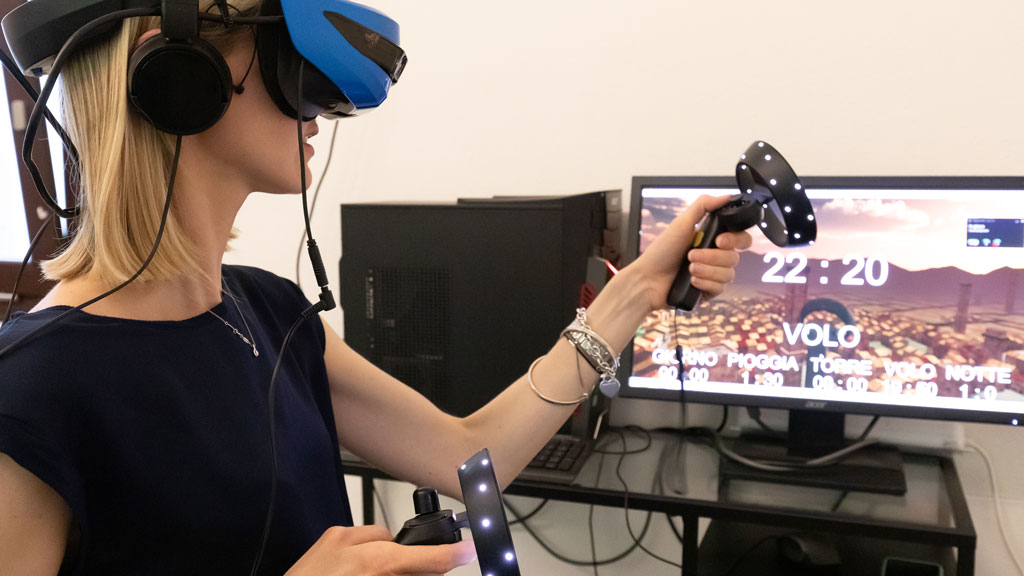

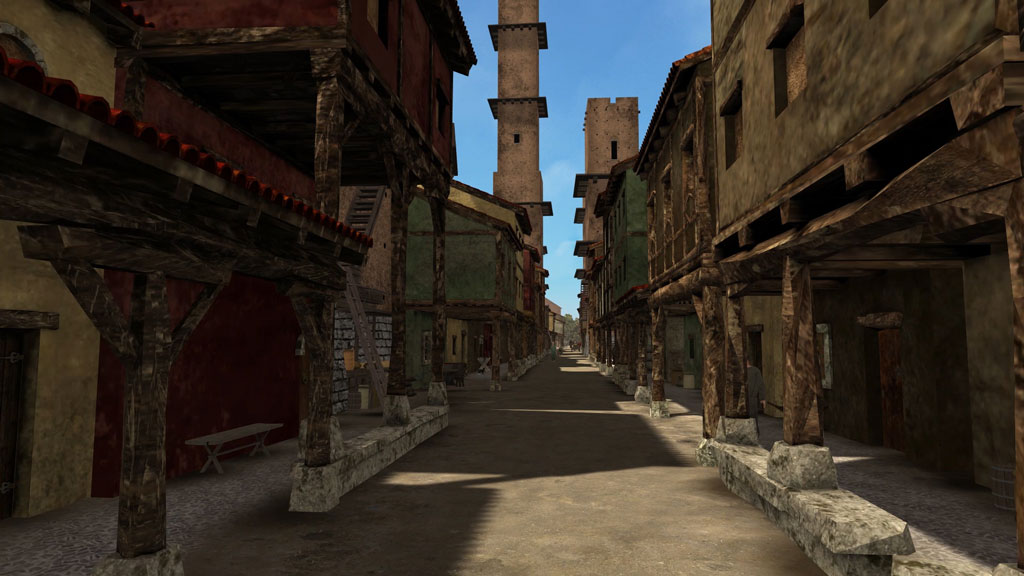
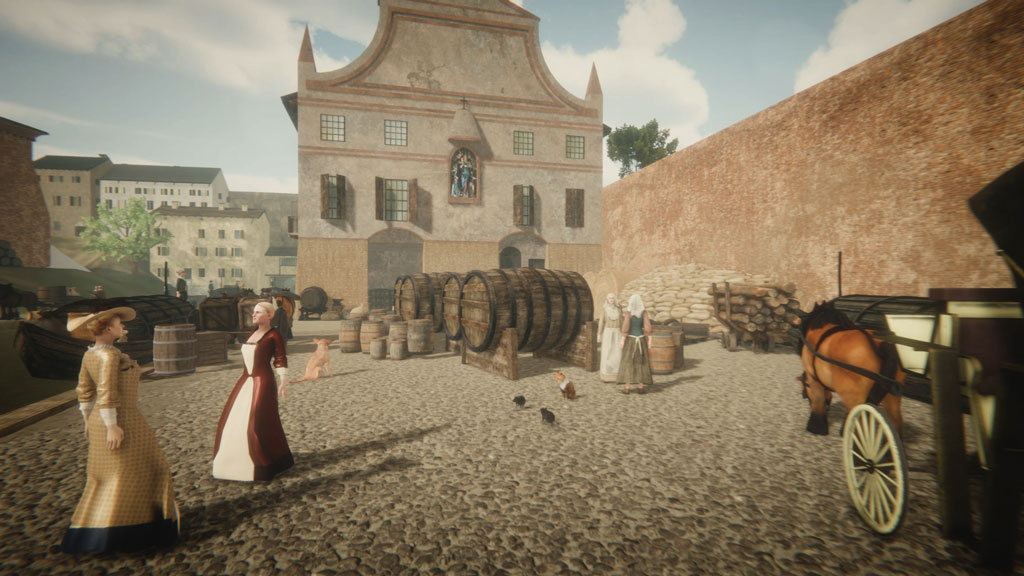

Via Castiglione 8, Bologna
The Museum is temporarily closed due to a technical issue. We apologize for the inconvenience. It will open as soon as possible.
+39 051 19936370
Bus stop Rizzoli 11 A-B-C, 13, 14 A-B-C, 19, 25, 29, 30.
Bus stop Minghetti 11 A-B-C, 13, 29, 30.
For information on parking and restricted traffic zones, consult the dedicated page on the website of the Municipality of Bologna.
For costs, consult the rates on the exhibition pages.
Visit to the Museum of the History of Bologna
Full ticket | € 13
Reduced ticket | € 11
Over 75 years (with document)
Ticket from another Genus Bononiae Museum
Teachers with document
Agreements
University students with badge(19-26 years old)
Journalists with badge
Reduced group ticket (min. 15 people) | € 10 (+ € 1,50 of presale)
Special reduced ticket | € 5
School groups (+ € 1 of presale)
Young people aged 6 to 18
Card Cultura Light holders
Special reduced ticket for schools | € 2 (+ € 1 of presale)
School groups (6 to 18 years old) who combine the visit with an activity from the Genus Bononiae Educational Services (+ € 1 of presale)
Free ticket
Children up to 5 years
Visitor with disabilities
Group leader
Tourist guide with badge
Genus Bononiae Membership Card holders
Bologna Welcome Card holders
Card Cultura Bologna holders
ICOM members
Guided tours with reservations required
Scuole (a classe): 70 €
Adult and mixed group (adults and children): 80 €
Along with the admission ticket, you will receive a card that allows you to download an audio guide on your smartphone in four languages (Italian, English, Spanish, and French); therefore, it is recommended to bring your own earphones. You will also be able to read all the educational panels on your smartphone in the same four languages as the audio guide.
Back to BO
Smart ticket (14') | € 12
Top ticket (25') | € 18
Reduced smart ticket | € 10
Young people aged 8 to 14
Groups with more than 15 people
Reduced top ticket | € 15
Young people aged 8 to 14
Groups with more than 15 people
University students with badge (19-26 years old)
Card Cultura Bologna holders
Bologna Welcome Card holders
Free ticket
Tourist guide (1 entrance upon accreditation to esposizioni@genusbononiae.it)
Genus Bononiae Membership Card holders
Group leader
Journalists with card - upon request for accreditation to stampa.comunicazione@genusbononiae.it
Special packages
Smart ticket + visit to the Museum of the History of Bologna | € 20
Top ticket + visit to the Museum of the History of Bologna | € 25
Reduced top ticket + visit to the Museum of the History of Bologna | 15 €
Young people aged 8 to 14
Groups with more than 15 people
University students with badge(19-26 years old)
Pre-sale and reservation fees
Groups and individuals | € 2 per person
€ 2,50 for SPECIAL Top Ticket
Palazzo Pepoli Vecchio, the ancient home of one of Bologna’s most important medieval families, is the product of numerous architectural additions and renovations.
Its story began in 1276 when Romeo Pepoli bought the first structures. His son Taddeo Pepoli built the first nucleus of the Palace in 1344. The Pepoli family, the first to become Signori (‘Lords’) of Bologna, remained owners of the building until 1910.
In modern times, ownership of the Palace changed frequently. It even housed a typography for a short period. In 2003, the Fondazione Cassa di Risparmio in Bologna bought the building and converted it into the Museum of the History of Bologna, with restoration and museum layout by Mario Bellini and graphic design by Italo Lupi. At the centre of the courtyard, the architect Mario Bellini placed the “Tower of Time”, a glass and iron structure flooded with natural light from above. The Tower “reinvents” the courtyard and evokes Bologna of the Towers, making the entire museum itinerary seamless between the ground floor and piano nobile.
The destiny of buildings is sometimes like that of men. They risk being forgotten and falling into irreversible decay. Palazzo Pepoli Vecchio was risking this fate, but today it returns to shine and to show the great history of Bologna in a new and surprising way. This museum for the city was set up, like all my display works, respecting (and separating) the container and the content so that they mutually enhance beauty and meaning. At the centre of the Palace, a glass and iron tower reinvents the courtyard so that it regains its dignity and function. It seems like a magic lantern flooded with natural light from above, gradually descending into pure transparency. It is almost an epiphany that makes you reflect on the passage of time
Mario Bellini
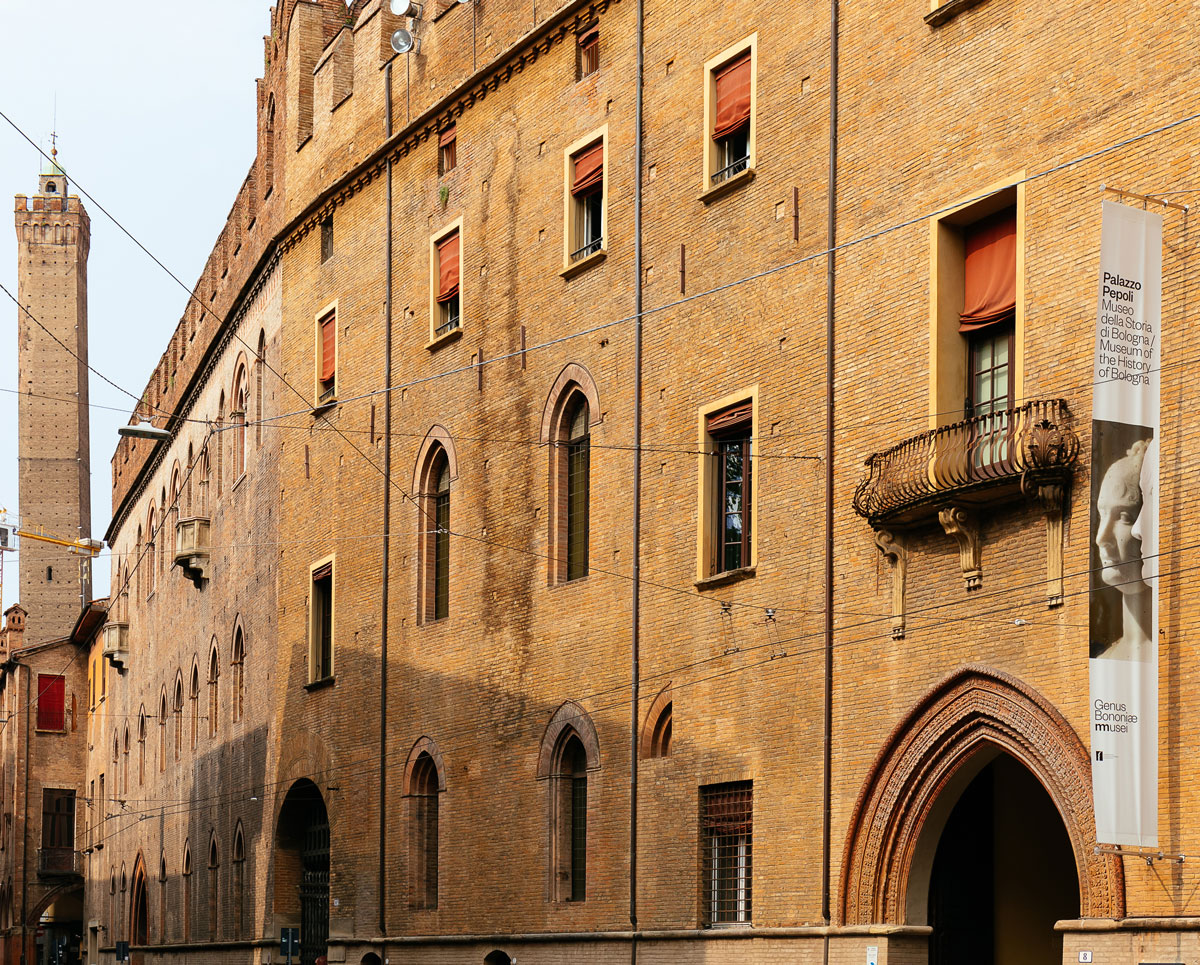
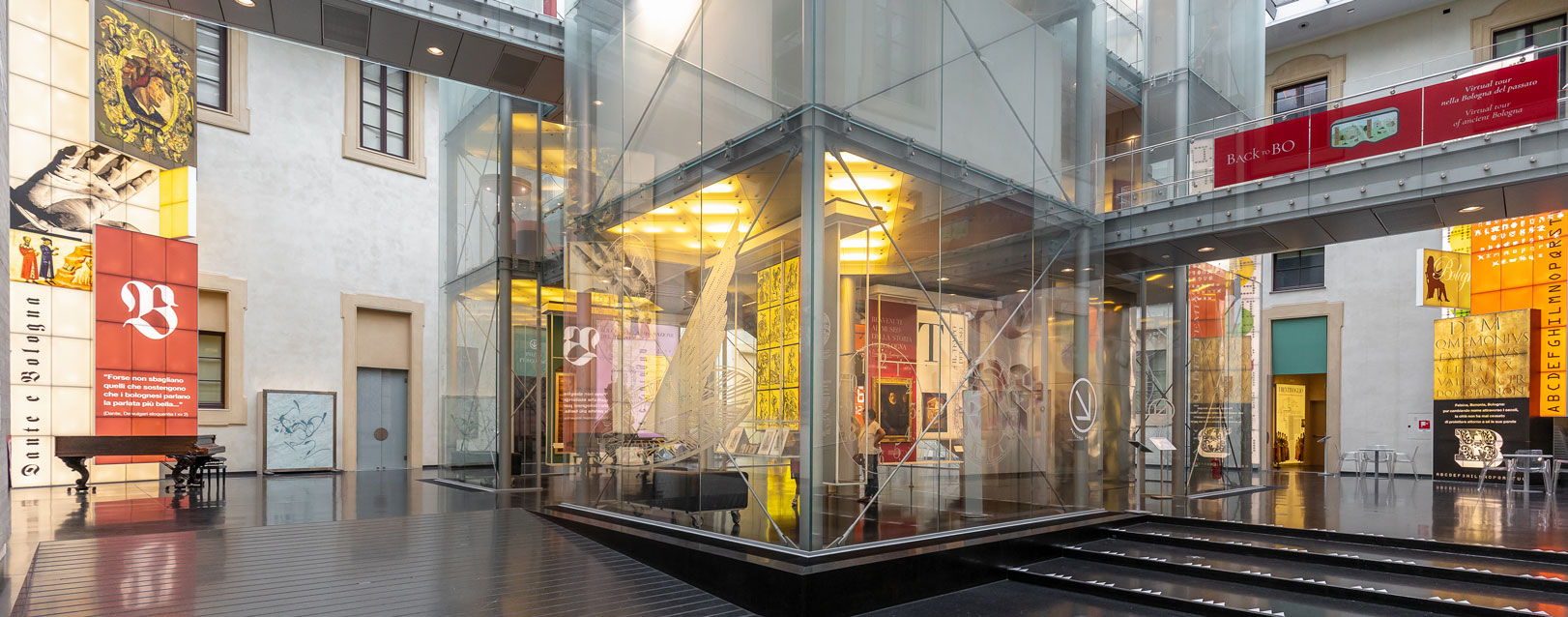
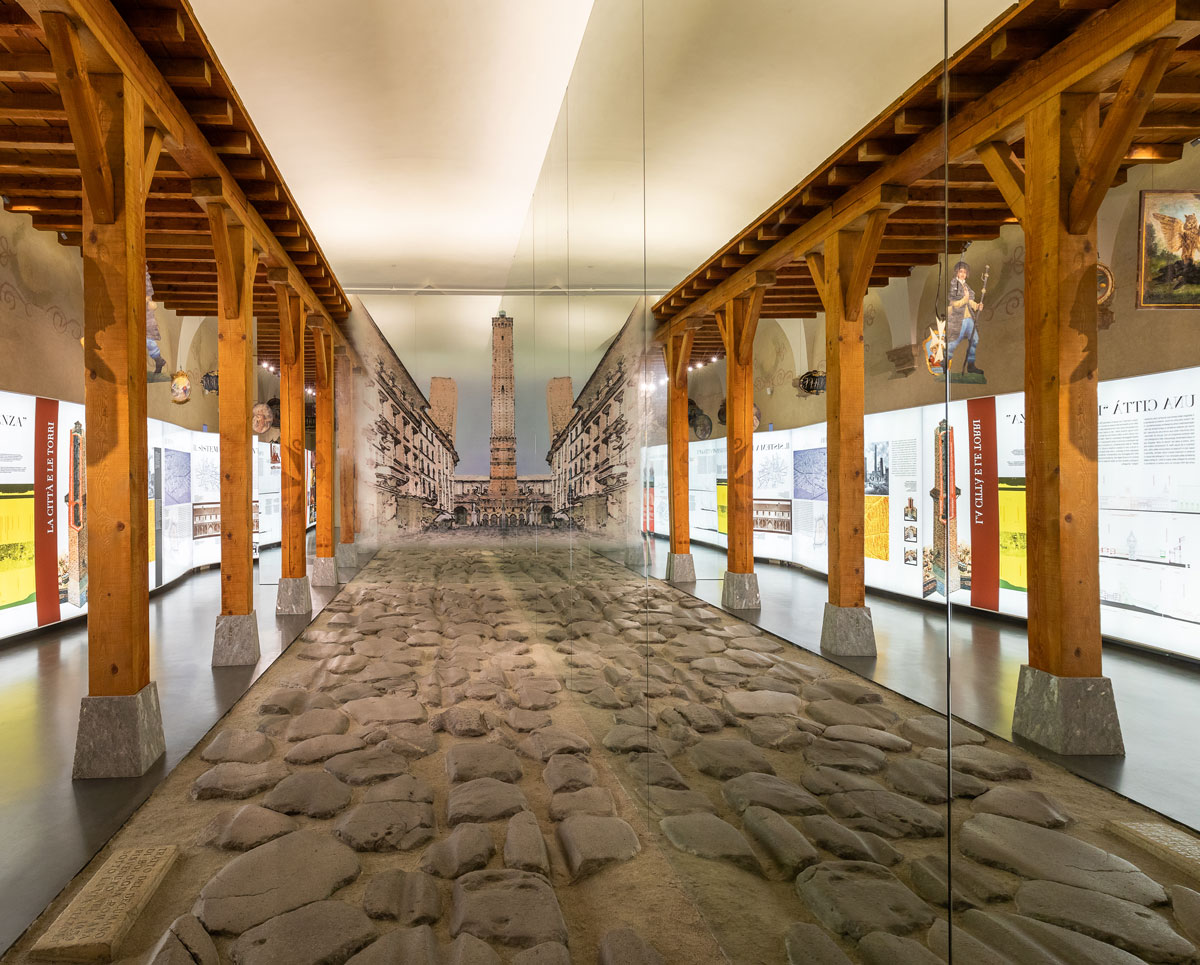
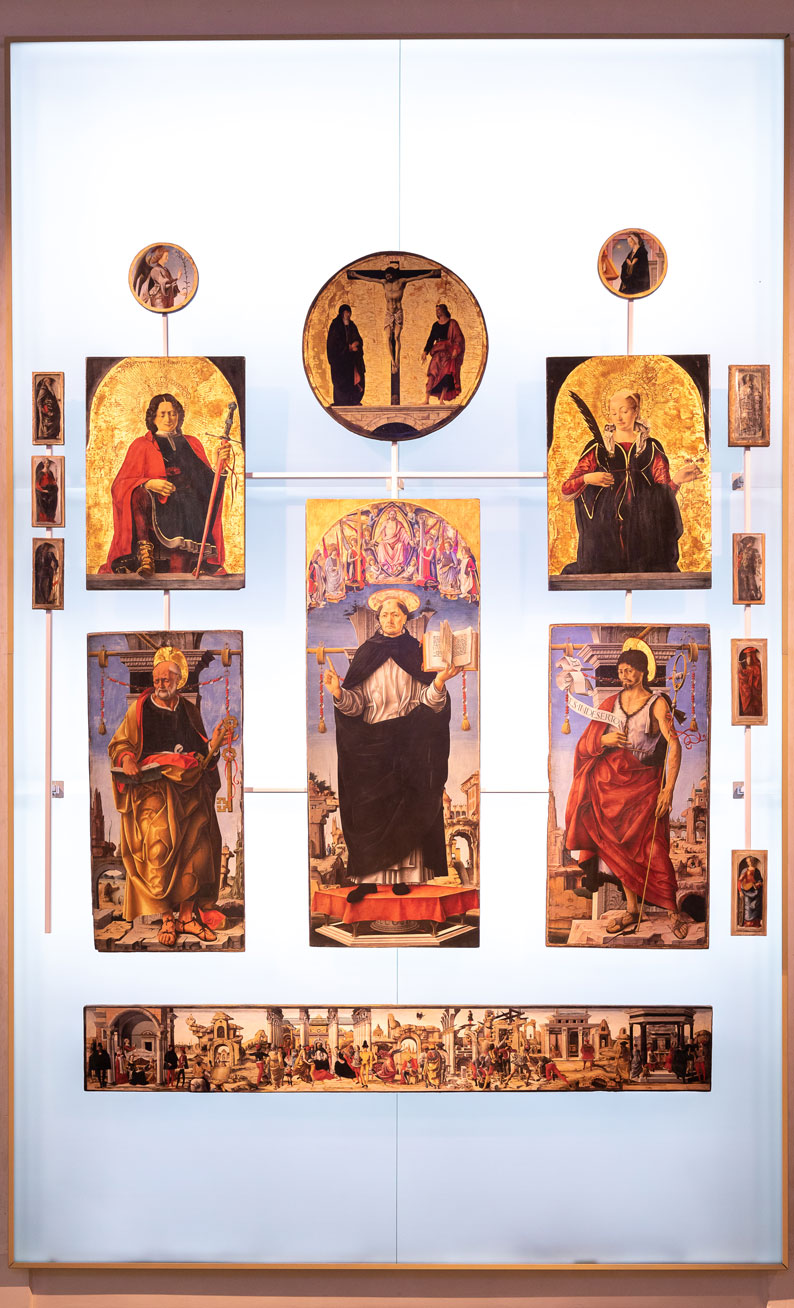
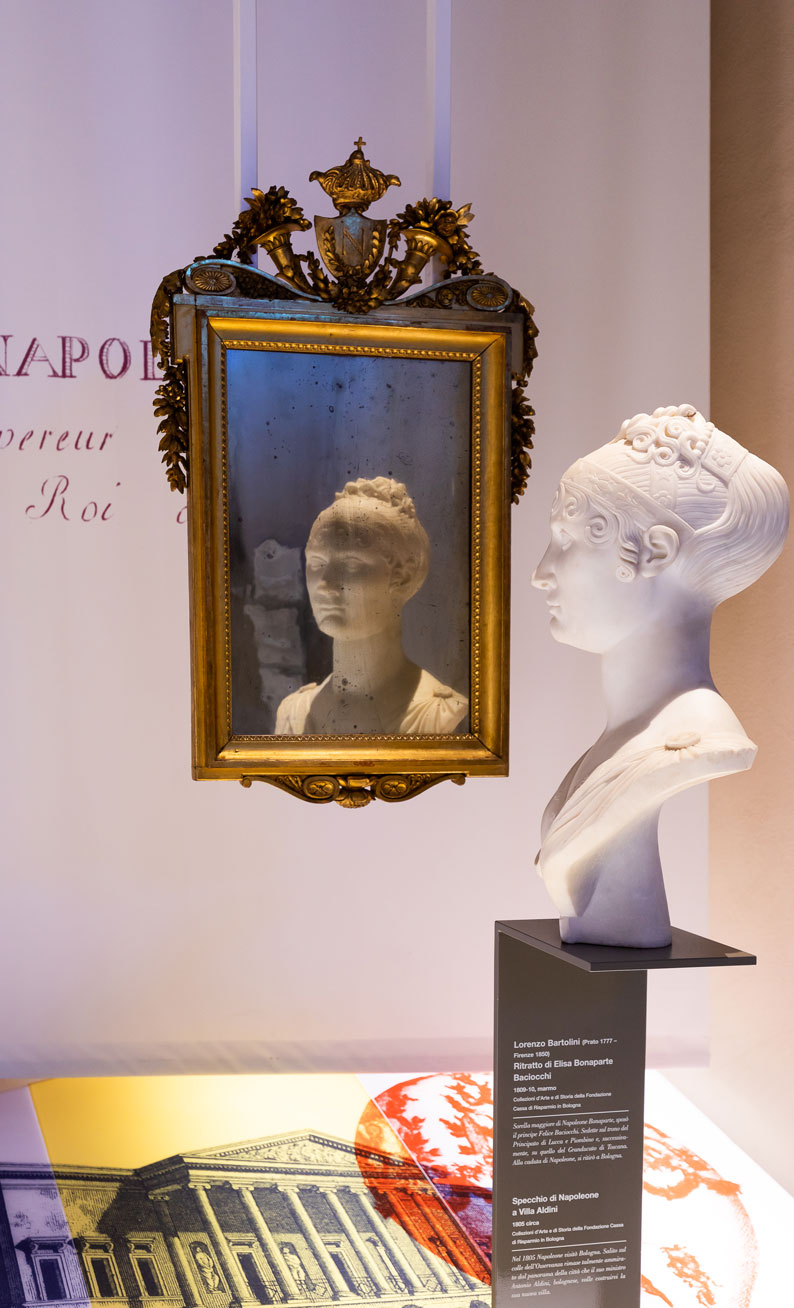
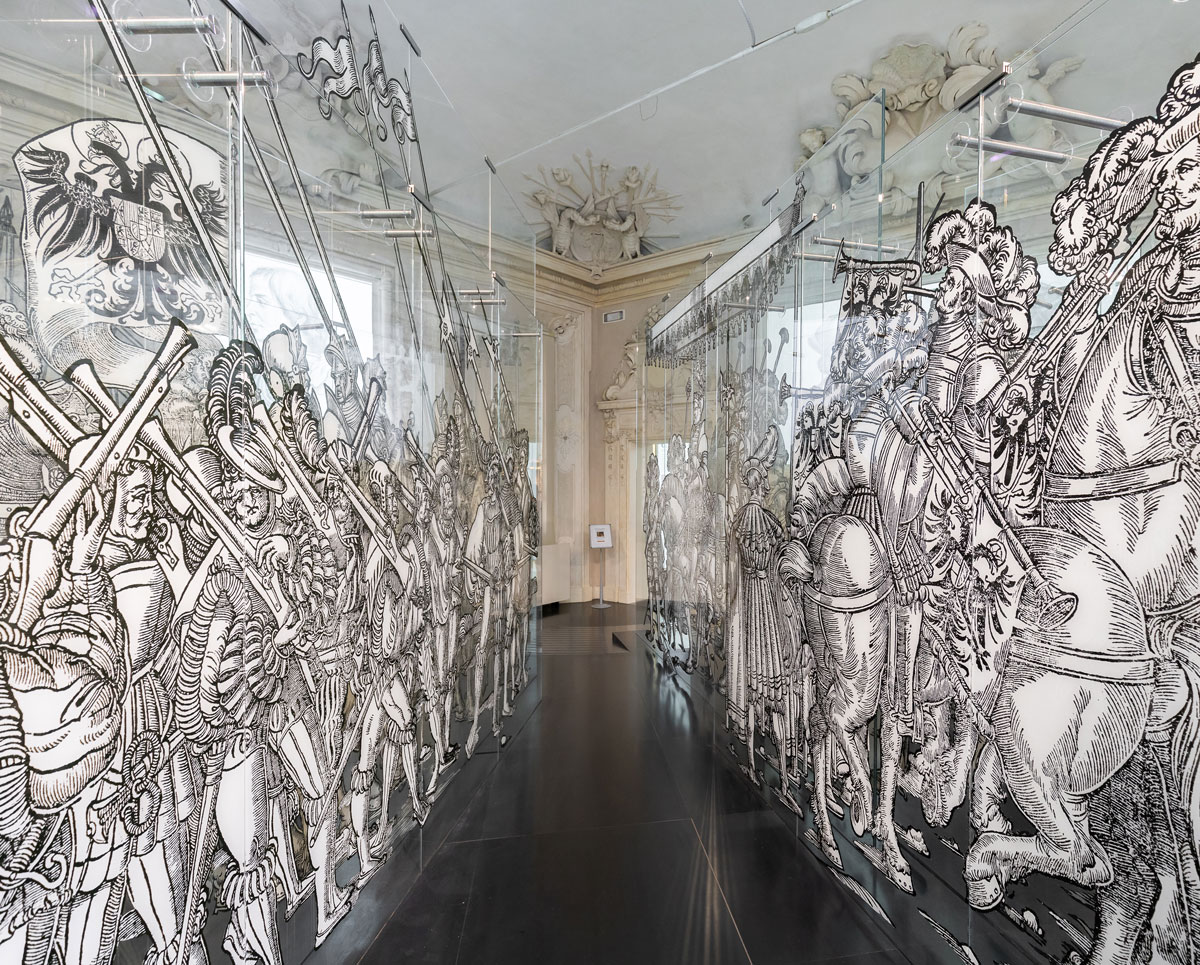
Discover all the Museums >
